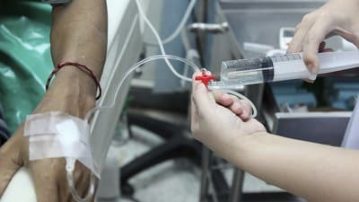In Australia, investigators analyzed 573 random adults from three emergency departments (EDs). These patients were to receive ketofol (a 1:1 mixture of ketamine and propofol) or propofol prior to a painful procedure.
Initially, ketofol was administered intravenously at 0.25 mg/kg ketamine and 0.25 mg/kg propofol, followed by 0.125 mg/kg of medication every 1-3 minutes titrated to effect. Propofol was administered intravenously at 0.5 mg/kg every 1-2 minutes titrated to effect.
Results showed there was no difference in the main outcome between the ketofol and propofol groups. The main outcome being an occurrence of a respiratory adverse event requiring intervention. In addition, patient satisfaction was high in both groups. The results also showed that severe emergence delirium was uncommon, although, slightly more likely to occur in the ketofol group while mild agitation was more common in the propofol group. Patient interference with the procedures was uncommon in both groups and transient hypotension was more common in the propofol group. Lastly, recovery was shorter with propofol by a median of 9 minutes.
Overall, propofol and ketofol are both suitable options for moderate-deep procedural sedation in properly monitored patients.

Citation(s):
Ferguson I et al. Propofol or ketofol for procedural sedation and analgesia in emergency medicine—the POKER study: A randomized double-blind clinical trial. Ann Emerg Med 2016 Jul 22; [e-pub]. (http://dx.doi.org/10.1016/j.annemergmed.2016.05.024)
